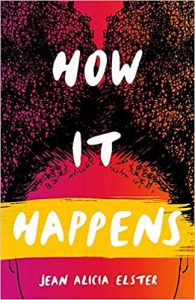Simplify the Narrative by Jean Alicia Elster
Simplify the Narrative by Jean Alicia Elster
 I travel before I begin work on a manuscript. My most recent three books have been historical fiction based upon my maternal family history. For the first two books, my trips were local. And many of the places were those that I had previously visited both as a youth and as an adult: the train station that had been abandoned and allowed to go into disrepair; the half-lot which was all that remained of my grandparents’ homestead, where their beloved fruit trees still stood; the eastern European butcher shops where my grandfather bought blood sausage.
I travel before I begin work on a manuscript. My most recent three books have been historical fiction based upon my maternal family history. For the first two books, my trips were local. And many of the places were those that I had previously visited both as a youth and as an adult: the train station that had been abandoned and allowed to go into disrepair; the half-lot which was all that remained of my grandparents’ homestead, where their beloved fruit trees still stood; the eastern European butcher shops where my grandfather bought blood sausage.
For the third book, I took a trip south to Tennessee and visited the home—now a tea house—where my grandmother was probably conceived. I walked down the street where her parents’ home stood (it is now a church parking lot). I visited both the black cemetery and the white cemetery, finding ancestral headstones in the white one, and unmarked graves in the black one. I saw the Cumberland River where my grandmother went nutting, a favorite pastime of young people in her day.
I share this as a way of showing how I try to immerse myself in the world I create in my books. I want the world of my muse to feel just as real as the world I actually inhabit. Whenever possible, I want to have walked down some of the sidewalks where my characters quite possibly walked. I want to see some glimpse of what they may have seen. I welcome all of those experiences in my head as I create fiction that resounds with and hopefully captivates my readers.
That process has served me well. However, it was during the writing of book three, HOW IT HAPPENS, where that same process became a hindrance to the flow and development of the manuscript. Not that I saw what was happening. But the keen eye and sensitivity of my editor brought portions of the manuscript to my attention when my desire to authentically recreate the world of my characters, either through description or dialog, blocked the progress of the narrative.
She would ask, “Does the reader really need to know this?” And it was gut check time for me as she pointed out a sentence, several paragraphs or – most humbling—an entire chapter that was red-inked for elimination. As I grappled with the notion that, indeed, in certain instances the narrative had been overburdened, I came to realize something very fundamental to the way I approach my writing: There are some things that the reader does not need to know.
My editor would break it down even further by saying to me, “Simplify the narrative!” And after hearing that enough times, I understood the notion that just because something is in my head does not mean that it should be in the book. And I have now come to the point where I embrace the fact that there are certain things that should remain private between a writer and the world they have created. The reader will never know and should never know the depth of knowledge that exists in that other world.
So I offer heartfelt thanks to my dear editor for shaking up my mind-set as a writer: Annie Martin, I will be forever indebted to you.
Links to connect with Jean Alicia:
Website http://jeanaliciaelster.com
Facebook https://www.facebook.com/Jean-Alicia-Elster-Books-160713827312932
Instagram https://www.instagram.com/jeanaliciaelster/
Twitter https://twitter.com/j_a_elster
HOW IT HAPPENS, Jean Alicia Elster
BUY HERE
Pinterest https://www.pinterest.com/jelsterwrites/
Category: How To and Tips

 How It Happens follows the story of author Jean Alicia Elster’s maternal grandmother, Dorothy May Jackson. Born in Tennessee in 1890, Dorothy May was the middle daughter of Addie Jackson, a married African-American housekeeper at one of the white boardinghouses in town, and Tom Mitchell, a commanding white attorney from a prominent family. Through three successive generations of African-American women, Elster intertwines the fictionalized adaptations of the defining periods and challenges-race relations, miscegenation, sexual assault, and class divisions-in her family’s history.
How It Happens follows the story of author Jean Alicia Elster’s maternal grandmother, Dorothy May Jackson. Born in Tennessee in 1890, Dorothy May was the middle daughter of Addie Jackson, a married African-American housekeeper at one of the white boardinghouses in town, and Tom Mitchell, a commanding white attorney from a prominent family. Through three successive generations of African-American women, Elster intertwines the fictionalized adaptations of the defining periods and challenges-race relations, miscegenation, sexual assault, and class divisions-in her family’s history.




























